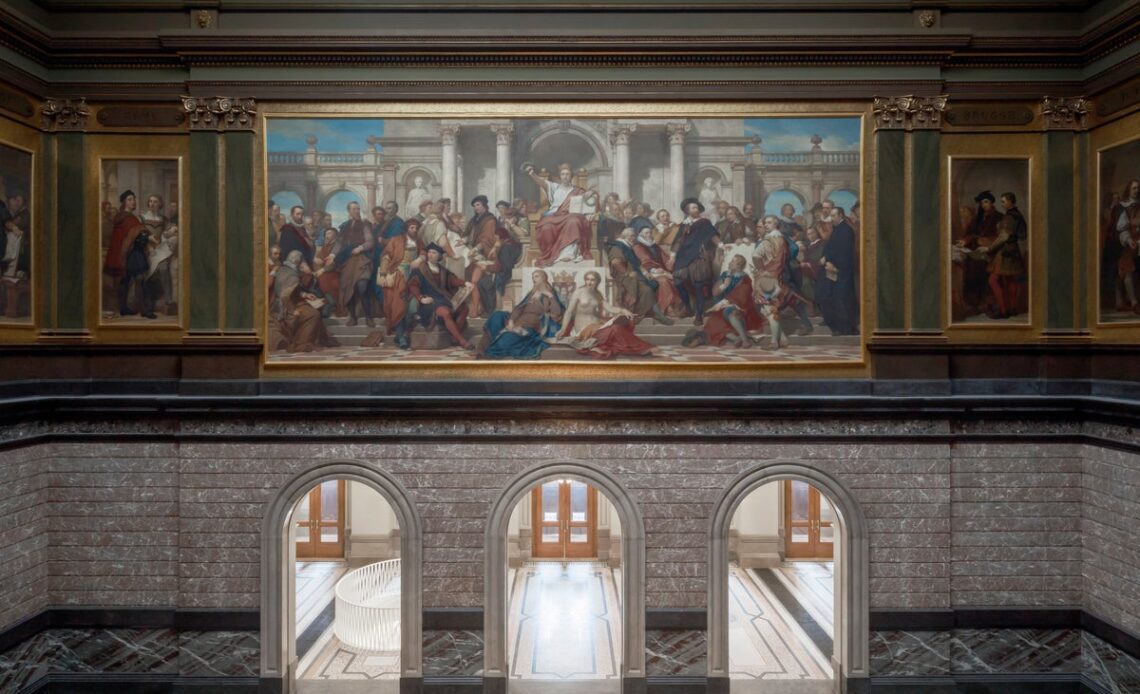“Come on – come and look at this!”
A woman I met 10 minutes previously beckons me over, giddy as a child, to what I can only describe as a shapely bottom protruding from the floor. You bet your arse – quite literally – I’m going over there.
“Lahhhhhh!!!”
If the bottom was unexpected, this certainly is. The bottom has started singing to me. A bit more vibrato-laden than my usual taste but, in fairness, it is the first bum ever to serenade me.
KMSKA’s bum hits all the right notes
(Helen Coffey)
Now for the challenge: this derriere isn’t just here to warble at visitors; it’s a clue, nodding to a painting somewhere else in this gallery. My new friend and I silently cast our eyes around the room. Neither of us says it, but I suspect we’re secretly in competition to spot the out-in-the-wild bum first. And it’s not long before – “Yes! There it is!” Damn, she won. I bestow a grudging smile of respect before we sidle up to the sculpture’s original inspiration – Jan Sluijters’ “Naakte vrouw” (Female Nude), dating from 1910.
We’re enjoying this ever-so-slightly surreal experience at the KMSKA, otherwise known as the Royal Museum of Fine Arts, which has finally reopened in Antwerp, Belgium, to much fanfare after an 11-year, €100m upgrade. They could have tarted up the interiors, restored some of the big hitters and called it a day – but instead they took it further, consciously adding in playful, interactive elements in nearly every room.
The bum isn’t the only piece by a contemporary artist installed as a prompt to spot the painting it was inspired by. Elsewhere, we come across a vaguely demonic cat in a cage, eyes flashing red as it calls a creepy, high-pitched “hello”; a black stockinged leg protruding from the wall; strokeable maroon velvet camels, their limbs draped in bizarre, slightly unsettling contortions. Oh, and a massive nose, hidden in plain sight high up on a wall.
We’re encouraging visitors to look differently and see more
Carmen Willems, KMSKA director
It’s all part of the push to make KMSKA accessible for everyone, not just highbrow types. After all, as Peter De Wilde, CEO of the Visit Flanders tourist board, says, “It’s not hard to build a pompous temple to art” – but that was never the intention here.
“Amaze, enrich and connect: those were our three key aims,” says Carmen Willems, KMSKA’s director. “We’re encouraging visitors to look differently and see more.”
To that end, as…
Click Here to Read the Full Original Article at The Independent Travel…
